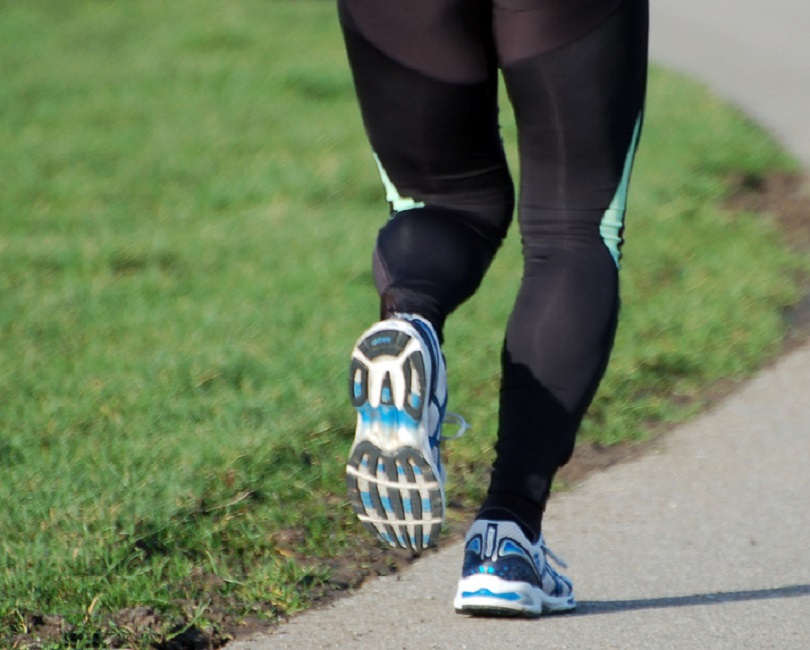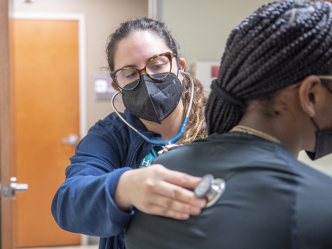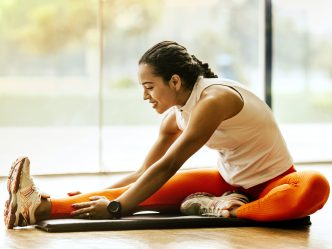AUGUSTA, Ga. – Staying motivated during the wintertime to get the recommended 30 minutes of moderate exercise at least five days a week can be difficult – especially when the cold temperatures are combined with fewer daylight hours.
“But don’t hibernate,” said Bonni Messner, a certified athletic trainer with the Augusta University Sports Medicine Center, “because regular exercise can boost energy levels, decrease stress levels, improve sleep and promote overall health. Just be careful.”
Just like exercising in extreme heat, working out in really cold temperatures can be risky, Messner said.
“Hypothermia and frostbite are the main injuries associated with exercising in cold temperatures,” she said. “Many times, wetness combined with the cold leads to hypothermia, and the result can be as severe as coma or death.”
“The body’s first imperative is to protect the vital inner organs, which it does by cutting back on circulation to your extremities such as feet, hands and nose,” Messner said. “These parts do not receive the warming benefits of blood flow while exposed to the cold and will eventually freeze. This is what happens when you get frostbite.”
If you’re going to exercise outdoors in cold weather, Messner recommends taking the following precautions:
1. Monitor weather conditions. Keep an eye on air temperature and wind chill to assist in clothing decisions and other protection needs.
2. Understand the signs and symptoms of cold injuries. The areas of the body affected by frostbite feel cold and firm. Burning, tingling, stinging or numbing sensations may be present. Clumsiness can result from impaired motor control. When the affected body part is re-warmed, a throbbing or burning pain may result. Some of the symptoms of hypothermia are slurred speech, stiff joints, loss of coordination, slow pulse, uncontrollable shivering and mental confusion.
3. Be careful of susceptibility. Certain people are more susceptible to suffering cold injuries. Adults over the age of 60 have a lower tolerance to cold as a result of reduced ability to conserve heat. Children also tend to be more susceptible to cold injuries because of their smaller size and body weight. Individuals with coronary artery disease and other pulmonary and respiratory diseases should use caution when exercising in the cold. Carry an inhaler if you suffer from exercise-induced asthma. You may also try using a scarf or a mask over your mouth and nose to help warm the air you’re breathing while exercising.
4. Dress in layers. Layering should be used for exercise in cold weather so you can adjust to weather conditions and the intensity of activity. Typical ensembles consist of three layers. The inner layer that is in contact with the skin is protected best with some type of moisture-wicking material such as polypropylene. Cotton and other materials that absorb moisture should be avoided. Top with an insulation layer such as a polyester fleece to help maintain warmth while allowing moisture to escape to the outer layer. Finally, the outer layer should be able to shield you from rain and wind, but still allow for moisture from sweat to escape. Usually the outer layer is worn only at rest or in adverse weather conditions.
5. Protect your extremities from the elements. A thin pair of gloves under a thicker pair of gloves or mittens can protect the fingers and prevent frost nip or frostbite. Athletic shoes can be up to a size larger to allow for thicker socks or layering of socks to prevent exposure to cold. In addition, covering the head for cold weather exercise is a vital factor that many people forget. Up to 50 percent of an individual’s body heat can be lost through the head.
6. Warm up before exercising. Yes, even when it’s cold a proper warm-up and ample time to stretch can loosen cold, tight muscles and help prevent strains or other injuries. Doing a light activity using similar muscle groups to those you will use while exercising makes the most effective warm-up. You may want to warm up indoors and then head outside; and have your cool down inside, too, Messner said.
7. Stay hydrated. Believe it or not, it is possible to become dehydrated in cold weather, especially if you are exercising in clothing that doesn’t breathe. Also if skin temperature falls significantly, it becomes harder to recognize thirst in cold weather. Maintaining adequate hydration will not only help to keep you safe while you exercise, but it will also help you perform your best. Drinking water is best. Avoid caffeine products as they can adversely affect blood flow in cold weather.
A couple of other suggestions from Messner include exercising with a friend so that you can keep an eye on each other, or simply moving your activities indoors.
 Augusta University
Augusta University




